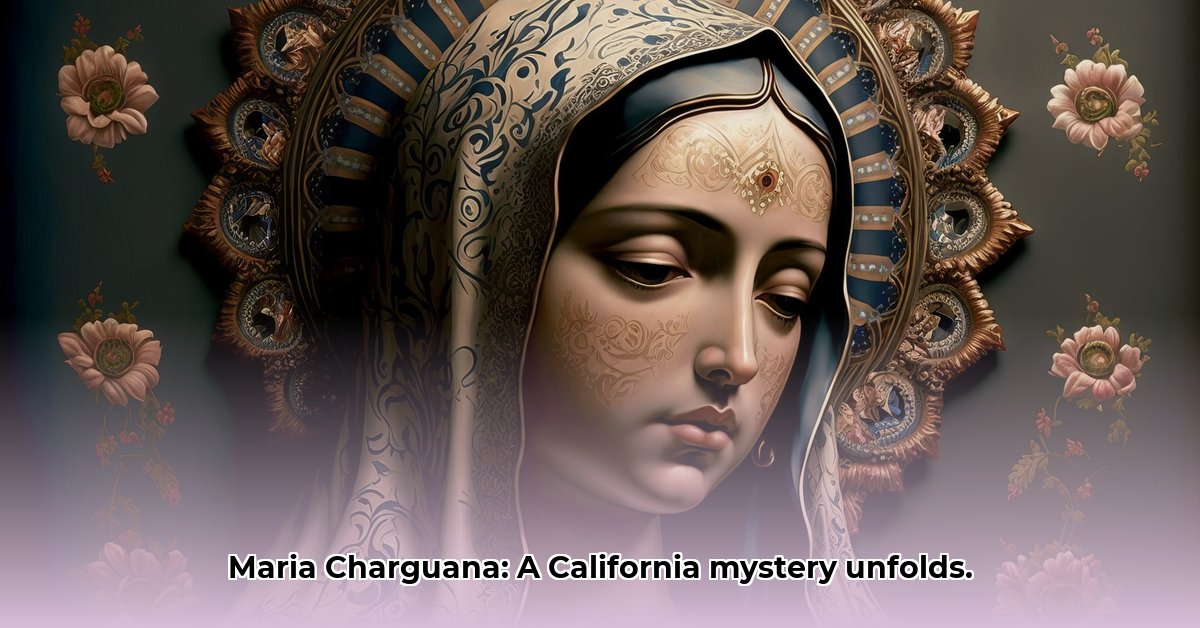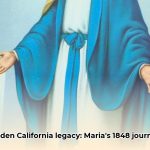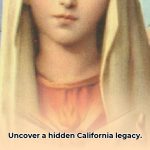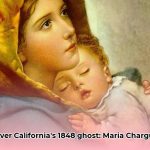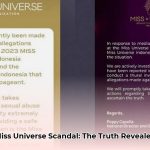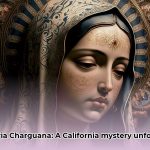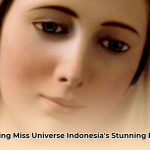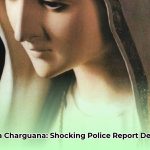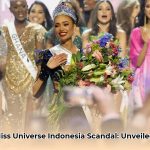Imagine trying to piece together a puzzle with half the pieces missing. That’s akin to uncovering the life of Maria Catarina Charguana, born in 1848 at Mission San Fernando. Her family’s roots blended Native American, French, and Spanish cultures in 19th-century California. This article explores what is known about Maria Catarina, the mysteries surrounding her life, and the challenges in obtaining a complete picture of her experiences. It’s a story of resilience, cultural complexities, and the ongoing struggle to understand the past. For more information, see her family profile here.
A Life at the Crossroads: Maria Catarina Charguana’s Heritage
Maria Catarina Charguana’s name hints at a life lived at the crossroads of cultures. Born on May 4, 1848, at Mission San Fernando Rey de España, she embodied a mix of Luiseño Indigenous, French-Canadian, and Spanish-colonial heritage. This diverse background makes her a captivating historical figure, yet the details of her life remain fragmented and difficult to piece together.
Weaving Together Intricate Threads of Identity
Understanding Maria Catarina’s life requires a journey into a world vastly different from our own. Her parents, Jean Baptiste Charbonneau and Margarita Sobin, profoundly shaped her identity and her place within the rapidly changing California landscape. Jean Baptiste was the son of Toussaint Charbonneau and Sacagawea, the famed Shoshone woman who guided the Lewis and Clark expedition. This connection intertwines her story with the broader narratives of American exploration and westward expansion.
However, the precise nature of her parents’ relationship remains a mystery, underscoring the societal complexities surrounding interracial unions in 19th-century California. Were they formally married? Did their union face social disapproval or legal obstacles? The scarcity of documentation makes definitive answers elusive. The inconsistent use of her surname, sometimes appearing as “Charguana” and other times as “Charbonneau,” further obscures her identity and raises questions about record-keeping practices and cultural norms.
The year of her birth, 1848, marked a pivotal moment as California transitioned from Mexican rule to American control, initiating a period of enormous upheaval and transformation. How did this tumultuous environment shape her life, her choices, and her opportunities? What challenges and possibilities did she encounter as a child of mixed heritage navigating a society undergoing profound cultural and political shifts?
The Silences in the Records: A Quest for Lost Clues
Unfortunately, much of Maria Catarina’s adult life remains absent from historical records. Details regarding her marriage, children, or any descendants are scarce. This absence reflects a broader challenge in researching marginalized individuals from this period due to systemic biases in record-keeping and a historical tendency to overlook the experiences and contributions of women, particularly Indigenous women. These silences in the archives necessitate innovative research methods and a critical approach to historical sources.
Unearthing any additional evidence about her later life requires a multi-pronged approach. Examining mission records, exploring genealogical databases, and delving into local oral traditions within the Luiseño community could potentially yield valuable insights. It’s possible that a family heirloom, a forgotten diary, or an untold story passed down through generations could shed light on her experiences and fill in the gaps in her biography.
Illuminating the Mystery: Avenues for Future Research
Uncovering more about Maria Catarina Charguana remains a complex yet compelling endeavor. It requires a collaborative effort between historians, genealogists, tribal historians, and community members to contribute to the research process. This collaborative approach demands cross-referencing diverse databases, exploring lesser-known archives, consulting with experts in Luiseño history and culture, and actively seeking the voices of those with ancestral ties to her lineage.
Each fragment of information, no matter how small or seemingly insignificant, could contribute to a more complete understanding of this remarkable woman and her place in California’s history. Her story, though challenging to reconstruct, is worth pursuing as a testament to the resilience and adaptability of individuals navigating profound cultural and societal changes.
Key Points:
- The known details of Maria Catarina Charguana’s life primarily focus on her birth and parentage, while tracing her descendants presents significant challenges.
- Inconsistencies in historical records, including variations in spelling and unclear relationships, hinder genealogical research and create obstacles to tracing her lineage.
- Successfully tracing her ancestry requires a multifaceted approach that utilizes diverse resources, incorporates interdisciplinary perspectives, and fosters collaboration with experts and community members.
Tracing Maria Catarina Charguana’s Descendants Through California Mission Records
The documented life of Maria Catarina Charguana begins on May 4, 1848, at Mission San Fernando Rey. Her baptism record, entry #1884, meticulously recorded by Father Blas Ordaz, identifies her parents as Jean Baptiste Charbonneau and Margarita Sobin. This record serves as a critical starting point for understanding her origins and potential ancestry.
Unraveling the Complexities of Parentage and Surname
The precise nature of the relationship between Jean Baptiste and Margarita remains subject to speculation. Did they remain married throughout their lives? One account suggests that Margarita later married a man named Gregory Trujillo, raising questions about Trujillo’s role in Maria Catarina’s life and the potential adoption or use of his surname. The origin of “Charguana” itself, remains a puzzling element, absent from many typical genealogical sources and potentially reflecting a name variation, a family name, or even a clerical error. This uncertainty significantly complicates efforts to trace Maria Catarina Charguana’s descendants using California mission records.
Addressing the Challenges of 19th-Century Records
Researching 19th-century Californian genealogy often feels like navigating a labyrinth filled with inconsistent record-keeping practices, transcription errors, and language barriers. One online genealogical database might list her surname as Charguana, while another questions its validity or offers alternative spellings. The handwriting in old mission records can be difficult to decipher, and names may have been altered or translated over time, further compounding the challenges.
Strategies for Tracing Maria’s Descendants
Given these inherent complexities, a multifaceted research strategy is crucial for success:
- Expand the Scope of the Search: Explore alternative spellings of Charguana, Charbonneau, and Sobin, and consider variations in both English and Spanish.
- Investigate Collateral Lines: Trace the relatives of her known parents or potential step-parent, including siblings, aunts, uncles, and cousins, as these relatives may provide clues or connections to Maria Catarina’s descendants.
- Leverage the Power of Digital Resources: Utilize advanced genealogical databases such as Ancestry.com, FamilySearch, and MyHeritage, as well as online archives of California mission records.
- Seek Expertise and Guidance: Collaborate with genealogists specializing in California history, mission records, and Indigenous family research, as they possess specialized knowledge and skills to navigate the complex historical landscape.
- Directly Consult Archival Material: Directly access archival materials of Mission San Fernando Rey, including baptismal records, marriage certificates, and census data, for firsthand information.
The journey to uncover Maria Catarina Charguana’s descendants is a testament to the persistence and dedication required in genealogical research. The scarcity of readily available information only amplifies the intrigue and underscores the importance of employing a comprehensive research approach.
Mapping Maria Catarina Charguana’s California Social Networks
Maria Catarina Charguana’s life offers a glimpse into the dynamic social fabric of 19th-century California, illustrating the complexities of multi-ethnic heritage and cultural exchange. Her birth at Mission San Fernando Rey de España is documented, yet much of her life story remains elusive, shrouded in the mists of time. Researching Indigenous lineages, particularly within colonial contexts, poses unique challenges that demand sensitivity, ethical considerations, and a nuanced understanding of historical power dynamics.
Key Points:
- Maria Catarina Charguana’s life illuminates the multilayered complexities of multi-ethnic heritage in 19th-century California.
- Her birth at Mission San Fernando Rey de España is a matter of historical record, yet significant portions of her life story remain undocumented and open to interpretation.
- Researching Indigenous lineages requires a careful and ethical approach, emphasizing respect for cultural sensitivities and a commitment to collaborative knowledge-sharing.
A Daughter Bridging Two Worlds
Maria Catarina Charguana, born on May 4, 1848, at Mission San Fernando Rey de España, occupies a unique place in California history. Her father, Jean Baptiste Charbonneau, was the son of Sacagawea, while her mother, Margarita Sobin, was a Luiseño woman, creating a fascinating tapestry of intersecting cultures. But what transpired after her baptism on May 28th? The documented records become notably sparse, leaving researchers to grapple with the silences and gaps in the historical narrative.
Confronting the Challenges of Archival Research
Researching individuals of mixed heritage, especially within the context of colonial records, presents significant hurdles. These records often marginalize or omit the experiences and perspectives of Indigenous communities, reflecting the biases and power dynamics of the time. Filling these gaps requires a careful and critical examination of diverse sources, a willingness to acknowledge the limits of existing knowledge, and a commitment to centering Indigenous voices and perspectives.
Unveiling Hidden Connections Through Social Network Mapping
Mapping Maria Catarina Charguana’s California Social Networks
